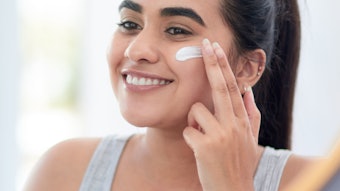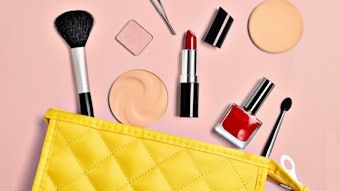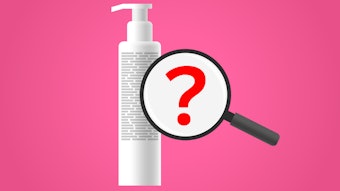
In Western countries, tanned skinned is often seen as a status symbol. People perceive those who are tanned as having the luxury of leisure time to bask in the sun, relax and socialize.1 Some celebrities exhibit this “healthy glow” all year round, influencing consumers to tan their skin. However, this can silence the message to wear sun protection to avoid the adverse effects of UV radiation.
Despite the cultural ideal, as many formulators know, tanned skin is actually a sign of damage.2 The good news is, there are several alternatives to sun tanning, and each is regulated differently; these will be described later.
On the other hand, skin whitening has grown in popularity in Asia. And although usually regarded as cosmetics, these products can cross into the gray area of cosmeceuticals.
Both skin tanning and whitening products, especially those not approved, can carry serious health risks due to the methods they employ or the ingredients they contain. Besides formulation concerns, there are often regulatory issues with the advertising claims for these products, particularly in the case of skin whiteners.
This column will review regulatory aspects of tanning products, radiation-emitting devices, skin colorants and cosmetics, drugs and supplements, and skin whiteners to make formulators aware of the risks these products can carry.
Tanning Products and Devices
Tanning products cover a diverse range of methods and formulations. They can be classified as drugs, cosmetics or radiation-emitting devices depending on how the tan is achieved and what the ingredients are. Note that not all methods or aspects of these techniques are U.S. Food and Drug Administration (FDA)-approved or fall under its jurisdiction.
UVA radiation: Some tanning products utilize ultraviolet (UV) radiation to alter skin pigmentation. Different types of UV radiation are responsible for different parts of the tanning process. UVA radiation penetrates the lower layer of the skin, the dermis, but is relatively weak. It is responsible for immediate tanning based on darkening of the melanin already in the skin, which fades 3–36 hr after exposure.
UVB radiation: UVB radiation is 1,000 times stronger than UVA, but can only penetrate the upper layer of skin, the epidermis. It is responsible for sunburn and the process referred to as delayed tanning, which occurs a few days after exposure and can last up to a few weeks. UVA increases the number of melanocytes in the skin, in turn increasing the number of melanosomes. These melanosomes spread throughout the skin layers as they travel to the surface and release melanin. When the melanin is oxidized it becomes darker, making the skin look tanned.
UVC radiation: There is also UVC radiation, which is highly dangerous even in small doses. Most UVC radiation is naturally absorbed by the ozone layer in the Earth’s atmosphere before it reaches the surface.3
The ability to develop a tan is largely due to skin type. This is measured using the Fitzpatrick scale (see Table 1), which takes into account genetics, reaction to sun exposure and tanning habits. Only skin types II to V are capable of developing a tan through UV radiation.4
Radiation-emitting devices: The classification of radiation emitting devices covers tanning beds and lamps that use UV radiation. In 2014, they were reclassified as type 2 radiation emitting devices, meaning they are subject to special controls and pre-market review.5 Most of these devices emit UVA and UVB radiation although some only emit UVA. They should not emit UVC radiation but if they do, in North America, they must comply with UVC: UVB ratio requirements.3
There are strict guidelines for worker and consumer protection, exposure times, construction, maintenance and labeling associated with tanning beds and lamps. Examples include: the bulbs used, eye protection, ventilation and warning statements. There are also requirements regarding warning labels, which must accompany all advertising materials for tanning beds.
Although these products are approved by the FDA, they are classified as hazardous, even when used as directed. Some of the risks of tanning by UV include burns, immune suppression, skin cancer, allergic reactions, premature skin aging and eye disorders. More than 3,000 emergency room visits per year are reported due to injuries related to the use of tanning beds. However, including the number of cases treated at outpatient clinics or physicians’ offices, not to mention those untreated or reported, the actual numbers are much higher.6
Topically applied tanning products are regulated as cosmetics if they work only on the epidermis and do not contain an SPF.
Skin Colorants and Cosmetics
In addition to UV radiation tanning, some products dye the skin to make it darker. The most common colorant in such products is dihydroxyacetone (DHA).7 This chemical reacts with amino acids in dead skin cells in the epidermis, simulating a tan that can last several days before the dyed layer of skin is shed.5
Topically applied tanning products are regulated as cosmetics if they work only on the epidermis and do not contain an SPF. They often are called self-tanners and may or may not require exposure to UV rays to activate the formula.8, 9 Products that do not require UV exposure are also known as sunless tanners, although this term is not defined by the regulations enforced by the FDA.7 Cosmetic tanners can include creams, lotions, oils, shower gels, tinted moisturizers, bronzing powders and tanning wipes.10
Since cosmetic tanning products do not contain an SPF, they must be accompanied by the following warning statement: "Warning—This product does not contain a sunscreen and does not protect against sunburn. Repeated exposure of unprotected skin while tanning may increase the risk of skin aging, skin cancer and other harmful effects to the skin even if you do not burn.”11
Although it is considered a color additive, DHA is indicated for external use only and contact with mucous membranes and the eye area should be avoided. This can be difficult with processes such as spray tanning; while protection for the eyes, nose and mouth is usually provided, this does not guarantee DHA will not contact these areas. Therefore, the use of DHA in spray or mist tanning booths is considered an unapproved use of a color additive. There also are strict limits on the levels of impurities and volatile matter that DHA can contain.7 Clearly, it is much easier to avoid contacting sensitive areas by using creams or powders that are manually spread onto the skin.
The safety of spray tanning booths is the responsibility of local or state authorities, meaning regulations can vary from city to city. The use of spray tanning booths can sometimes be associated with dizziness, coughing and fainting, although it is unclear whether these symptoms are due to a pre-existing medical condition or an allergic reaction to one or more ingredients in the product being applied.7
Drugs, Natural Health Products and Dietary Supplements
Tanning products containing an SPF or making sun protection claims are regulated both as OTC drugs and cosmetics in the United States, and either as drugs or natural health products in Canada.12 These products commonly include tanning creams/lotions and tinted moisturizer. There are also oral tanning products, which in Canada, are considered drugs because they change the skin tone from inside the body. In the United States, however, they are considered dietary supplements.13
Oral tanners can turn the skin any shade between orange and brown. These pills contain coloring agents such as canthaxanthin, which are deposited in the fatty layers beneath the skin, giving the appearance of a tan.8 Such products are, in fact, not authorized for sale in the United States or Canada because canthaxanthin is not an approved color additive and can carry serious health risks, the more serious of which include hives, canthaxanthin retinopathy and liver damage.5
Skin Whitening
Although tanned skin is currently popular in Western countries, it wasn’t always this way. As early as ancient Roman times, the cultural ideal was to have light, pale skin.14, 15 This was a status symbol that signified one had enough wealth that he or she did not need to live or work outside. There is even evidence the Roman emperor, Nero, and his wife used a mixture of white lead and chalk to lighten their skin.16 The trend of whitening the skin continued into the 20th century, when Coco Chanel popularized tanned skin.14
However, today, light skin is still desirable in many Asian countries, notably China, Japan, Korea and India. Pigmented skin is the first sign of aging in these ethnic groups, so products that whiten skin are considered anti-aging treatments.17, 18 Due in part to rising immigration in Western countries, skin whitening products are becoming more popular.19 This is especially true in areas with large Somali, Latino, Asian or Middle Eastern ethnic communities.20 Fifty percent of Asian cosmetic consumers consider skin whitening benefits to be essential in skin care products—more than twice the number of North American or European consumers.21 Whitening products accounted for almost one-third of all skin care business in 2014, and the global market was expected to reach $10 billion by 2015;22, 23 it is now expected to reach $23 billion by 2020.24
Due to the demand for these products, a considerable supply of unregulated skin whitening cosmetics and drugs is on the black market. These products often contain ingredients that, although effective, have been declared harmful and banned from legal whitening products.
Fifty percent of Asian cosmetic consumers consider skin whitening benefits to be essential in skin care products.
Product forms and activities: The process of skin whitening is also known as skin lightening or bleaching, depending on the country and skin treatment used.25 For example, in Asia, it is often referred to as whitening for cosmetic purposes whereas in the United States, lightening prescription drugs are used to treat pigmentation problems.14, 26
Whitening products come in many forms under many names. Topical applications may go by names such as color correction cream or fairness cream.27, 28 Many moisturizing and sun care formulas even add whitening ingredients to cater to this huge market.29
There are also novel delivery methods such as skin whitening gloves, in which the active ingredients are embedded in the fabric before transferring to the user.30 Unregulated injectable products—which are not approved by the FDA—also exist on the black market.31
One way skin whitening products work is by inhibiting the formation and release of melanin from melanocytes.32 In this case, active ingredients interfere with the tyrosinase pathway of melanin production or simulate the destruction of melanin by melanozymes.26, 33 Many of the most effective substances that do this, however, have been banned from whitening products due to health risks.
Health concerns: Two substances of particular concern in the niche skin whitening market are mercury and hydroquinone, both of which dramatically whiten the skin. These are banned from North American and European cosmetic whiteners but can still be found in illegal products.34
Mercury is absorbed through the skin, and toxic levels can accumulate with prolonged exposure.35 Some over-the-counter, non-injectable skin bleaching agents contain ammoniated mercury. Such products are considered new drugs and must go through the FDA approval process.30
The negative side effects of using hydroquinone-based illegal skin whiteners include acne and stretch mark discoloration, chemical burns, hypertension and diabetes.36
Illegal injectable whitening products carry even greater risks. They often contain undeclared harmful ingredients or contaminants. Some of these ingredients can include glutathione, vitamin C, collagen and human placenta. In addition, unsafe injection practices can result in infection, injury and disease transmission.31
Concerning claims: Finally, skin whiteners also can run into regulatory trouble in the ways they are marketed. Terms like lightening and brightening are preferred over whitening in North America. However, depending on the nature of the claims made, some products venture into the limbo territory of “cosmeceuticals.” This pseudo-category is not recognized by regulatory bodies in North America and cosmetics claiming to alter the function of the skin are considered drugs.
Advertising regulations are also a big issue in the skin whitening market. Many examples of products in both print and television advertising with racist or discriminatory undertones exist. These ads often suggest people with darker skin are at a disadvantage in their professional or romantic lives, or target Asian consumers.14, 27
Conclusions
Since ancient times, skin color has been a symbol of wealth and beauty. Although the ideal has shifted in some regions, products that can darken or lighten skin are significant to business. The diversity of regulations governing these products reflects the range of formulation, regulatory and marketing concerns associated with this niche area. The demand is there but the challenge is to create products that are safe and effective, as well as ethically marketed.
References
- cosmeticsdesign.com/Formulation-Science/Analysing-the-motivations-behind-sun-tanning-and-UV-exposure
- www.fda.gov/Radiation-EmittingProducts/RadiationEmittingProductsandProcedures/Tanning/ucm116432.htm
- hc-sc.gc.ca/ewh-semt/pubs/radiation/tan-bronzage/index-eng.php
- dermatology.ca/skin-hair-nails/skin/photoaging/know-your-skin-type
- www.fda.gov/Radiation-EmittingProducts/RadiationEmittingProductsandProcedures/Tanning/ucm116434.htm
- www.fda.gov/Radiation-EmittingProducts/RadiationEmittingProductsandProcedures/HomeBusinessandEntertainment/ucm116447.htm
- www.fda.gov/Cosmetics/ProductsIngredients/Products/ucm134064.htm
- healthycanadians.gc.ca/product-safety-securite-produits/consumer-consommation/education/cosmetics-cosmetiques/tanning-bronzage-eng.php
- www.fda.gov/Cosmetics/Labeling/Regulations/ucm134252.htm
- cosmeticsdesign.com/Market-Trends/Trends-from-numerous-beauty-categories-influence-wipes-market
- www.ecfr.gov/cgi-bin/retrieveECFR?gp=&SID=5f78735426a22cc68bb389f3c2bf6f34&r=PART&n=21y7.0.1.2.14#21:7.0.1.2.14.2.1.6
- www.fda.gov/Cosmetics/ProductsIngredients/Products/ucm134059.htm
- KA Walters and MS Roberts, Dermatologic, Cosmeceutic and Cosmetic Development: Therapeutic and Novel Approaches, CRC Press, Boca Raton, FL USA (2007)
- cosmeticsdesign-asia.com/Market-Trends/Study-raises-ethical-concerns-of-skin-whitening-ads
- cosmeticsdesign.com/Formulation-Science/Scientists-discover-secrets-of-ancient-cosmetics-formulation
- cosmeticsdesign-europe.com/Market-Trends/Old-safety-problems-and-black-market-sales-threaten-skin-lightening-promise
- cosmeticsdesign.com/Brand-Innovation/Indian-brand-launches-campaign-against-skin-whitening
- cosmeticsdesign-europe.com/Market-Trends/Asia-s-skin-whitening-market-is-often-misunderstood
- cosmeticsdesign.com/Market-Trends/Fresh-faced-the-latest-skin-care-trends-in-Canada
- cosmeticsdesign.com/Regulation-Safety/FDA-links-imported-skin-care-and-anti-aging-products-to-mercury-poisoning
- cosmeticsdesign.com/Brand-Innovation/Clarins-targets-Asian-consumers-with-skin-whitening-range
- cosmeticsdesign.com/Market-Trends/A-roundup-of-Florence-Bernardin-s-expert-advice-on-cracking-Asia-s-markets
- cosmeticsdesign.com/Market-Trends/Skin-lightening-for-the-nether-regions-a-step-too-far
- strategyr.com/pressMCP-6140.asp
- webprod.hc-sc.gc.ca/nhpid-bdipsn/vocabsrReq.do?srchRchTxt=bleaching&mdlCls=pf&mthd=Search&lang=eng
- cosmeticsdesign.com/Market-Trends/Skin-whitener-doing-well-in-US-market-on-back-of-Asian-success
- cosmeticsdesign.com/Market-Trends/Do-you-wanna-be-white-Is-this-Korean-ad-taking-Western-beauty-ideals-too-far
- cosmeticsdesign.com/Market-Trends/Skin-whitening-trend-driving-male-cosmetic-market-in-India
- cosmeticsdesign.com/Market-Trends/Multi-functional-skin-care-with-whitening-properties-popular-in-China
- cosmeticsdesign-asia.com/Business-Financial/Induchem-develops-gloves-to-cater-to-skin-whitening-trend
- fda.gov/forconsumers/consumerupdates/ucm460788.htm
- cosmeticsdesign.com/Formulation-Science/Cognis-targets-growing-skin-whitening-market
- cosmeticsdesign.com/Formulation-Science/New-skin-whitener-from-Unigen-effective-at-low-concentrations
- cosmeticsdesign-europe.com/Market-Trends/Multi-benefit-natural-products-to-drive-skin-whitening-market
- cosmeticsdesign.com/Regulation-Safety/Watchdog-finds-mercury-containing-skin-whiteners-still-on-sale-despite-govt.-ban
- cosmeticsdesign-europe.com/Market-Trends/Skin-lightening-can-be-dangerous-according-to-Mayor-of-Paris












